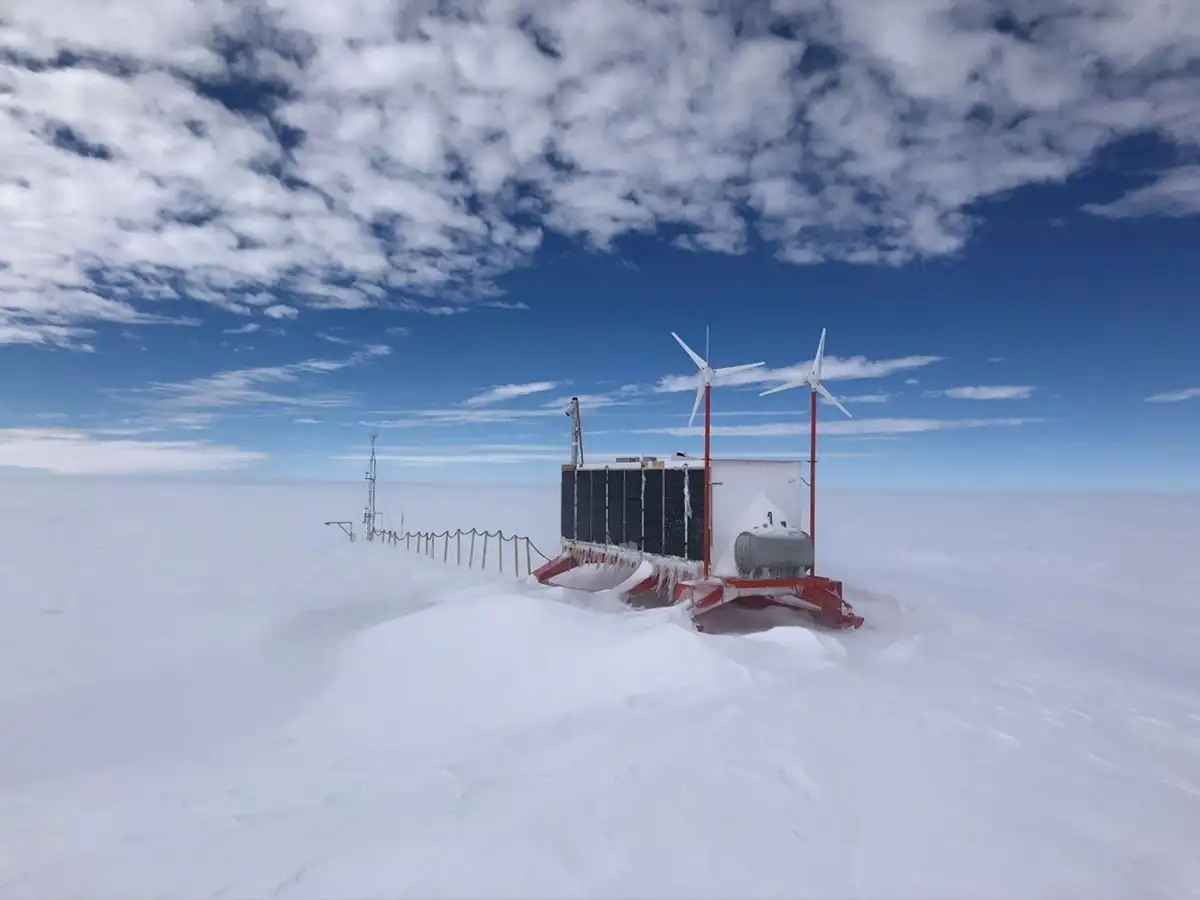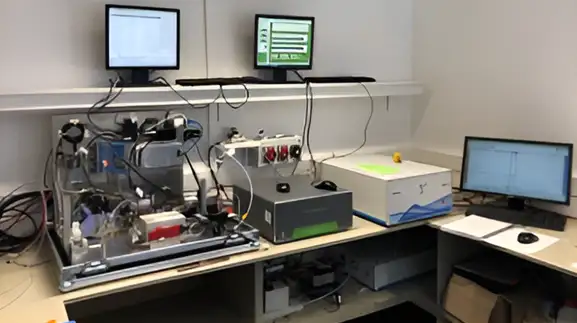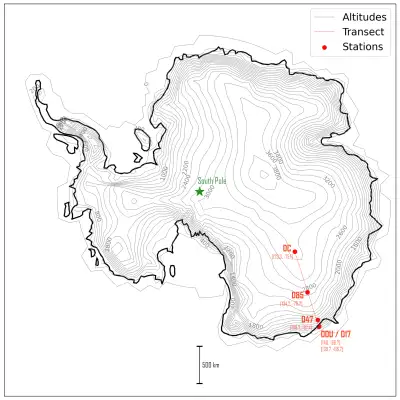
ProCeas AIR+ H2O analyzers are successfully measuring water isotopes in Antarctica
Within the AWACA project (European ERC grant ID 951596), the Laboratoire des Sciences du Climat et de l'Environnement (LSCE) has successfully deployed PROCEAS AIR+ H2O isotope analyzers at five locations in East Antarctica with the support of IPEV (Institut Polaire Français Paul-Emile Victor), further advancing climate research in extreme environments. These state-of-the-art laser spectrometers, developed by DURAG GROUP’s subsidiary AP2E, are providing groundbreaking insights into the atmospheric water cycle that will ultimately improve the interpretation of ice core paleoclimatic records.
At a glance
|
Customer: Laboratoire des Sciences du Climat et de l'Environnement (LSCE) |
OFCEAS technology enables precise measurements even under extreme conditions
The ProCeas AIR+ H2O instruments utilize Optical Feedback Cavity Enhanced Absorption Spectroscopy (OFCEAS) to measure water vapor isotopes with exceptional precision, even in ultra-dry conditions. This deployment marks a significant step forward in polar climate monitoring, as previous methods, based on CRDS technology, struggled with the low humidity levels encountered on the East Antarctic Plateau, where water mixing ratios can be as low as 10 ppm during austral winter.
"The deployment of the ProCeas H2O analyzers went incredibly well this year. All of them are now operating in Antarctica across our five sites, including three autonomous energy-powered stations, and they are successfully transmitting data. We are thrilled with the results!"
Thomas Lauwers, research engineer at CEA, LSCE (Commissariat à l’Energie Atomique et aux Energies Alternatives, Laboratoire des Sciences du Climat et de l'Environnement)
Installed at various locations across Adelie Land and the East Antarctic Plateau, including Dumont d’Urville and Concordia research stations, these instruments deliver continuous, high-resolution data essential for understanding atmospheric dynamics, moisture transport, and snow-atmosphere exchange processes. Their performance has demonstrated superior stability and accuracy, ensuring reliable measurements over extended periods in the harsh Antarctic environment.
The scientific community has praised the OFCEAS technology for its ability to capture transient atmospheric events with high precision, particularly in low-humidity conditions where traditional methods face limitations. In addition, AP2E's innovative design offers key advantages for field deployment in extreme environments, with mechanically assembled optical parts allowing fine adjustments in the field, as well as modular components that can be maintained and cleaned on-site. The embedded software further enhances adaptability, enabling researchers to fine-tune temperature, pressure, and other parameters to match the specific environmental conditions in Antarctica. These features minimize the risk of breakdowns and ensure long-term reliability in remote locations.
Note on the image gallery: All measuring instruments are housed inside the solar-powered container, with temperature maintained at 10 °C. The vertical pipe on the roof is the water isotope sampling line; in the background: the weather station. Credit: Thomas Lauwers
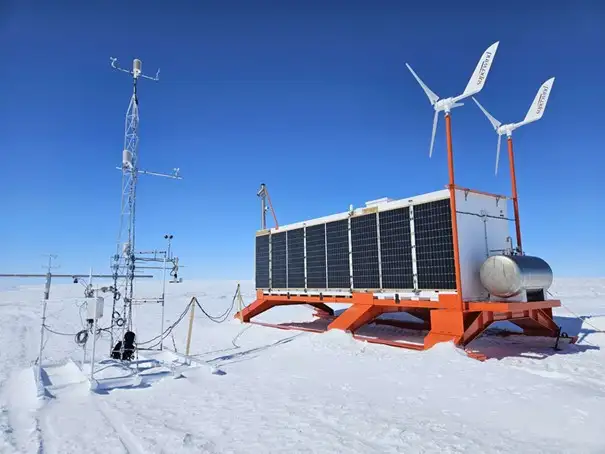
A comprehensive scientific study detailing the performance and impact of these instruments has been published in Atmospheric Measurement Techniques and can be accessed here: https://amt.copernicus.org/articles/18/1135/2025/
As part of this study, the authors highlight that: “Calibration measurements over an unprecedented 1-year-long period confirmed the stability of the OFCEAS analyzer, which combines extremely low noise and fast response - enabling the measurement of transient phenomena like the isotopic composition of individual snowflakes - while remaining adaptable and robust for field deployment in remote environments, reducing the risk of breakdown.“
Note on the image gallery: Inside the laboratory: AP2E ProCeas® analyzers in action. The instruments continuously measure water vapor isotopes in ambient air, with live data displayed on local screen and remotely, for real-time monitoring and analysis. Credit: Thomas Lauwers
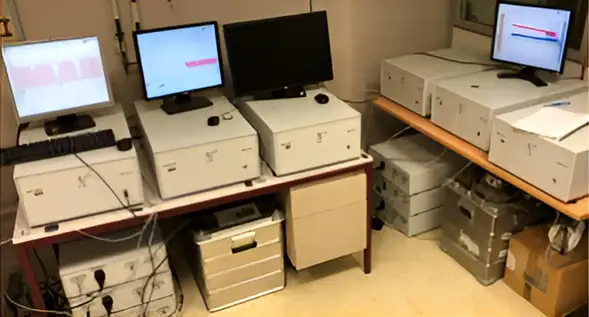
The collected data enables better climate models
“This achievement is a testament to the robustness, the versatility and the reliability of the ProCeas technology. We are proud to support LSCE and all the scientists in their critical research on climate processes, which will contribute to a better understanding of global climate change.”
Fabien Burato, Sales and Services General Manager at DURAG GROUP
We extend our heartfelt congratulations to the entire LSCE research team for their dedication and successful deployment of these cutting-edge instruments. We also thank them for their trust in DURAG GROUP and AP2E technology to support their vital work.
For more details on the ProCeas AIR analyzer, visit: https://www.durag.com/en/product-filter-837.htm?productID=ProCeas%20Air
With this successful deployment, the LSCE and DURAG GROUP reaffirm their commitment to advancing atmospheric science through cutting-edge technology. The collected data will be instrumental in refining climate models and improving predictions related to polar climate evolution.
About the project
AWACA (Atmospheric WAter Cycle over Antarctica: past, present & future) is a seven-year research project funded by the European Research Council (ERC) in 2021. Its goal is to deepen our understanding of the atmospheric water cycle in Antarctica and its impact on past and future climate. The project combines innovative measurements - using autonomous powered stations mixing solar panels, wind turbines and fuel cell-deployed along a 1,100 km transect from the French Dumont d’Urville base to the Concordia research station - with advanced modeling.
By analyzing isotopes in water vapor, snow, and ice cores, AWACA aims to reconstruct the climate variability of the past 1,000 years and improve predictions for the next 100. The data will help refine physical processes in global and regional climate models, ultimately enhancing our ability to forecast sea level rise linked to Antarctic ice sheet dynamics.
For more information about the AWACA project, visit: https://awaca.ipsl.fr/
Image note: The AWACA transect: a 1,100 km measurement line across Antarctica. From the Dumont d’Urville station on the coast to the Concordia station on the polar plateau, autonomous stations collect data on the atmospheric water cycle along this representative pathway of air masses transporting humidity from the ocean to the continent interior. Credit: @AWACA

